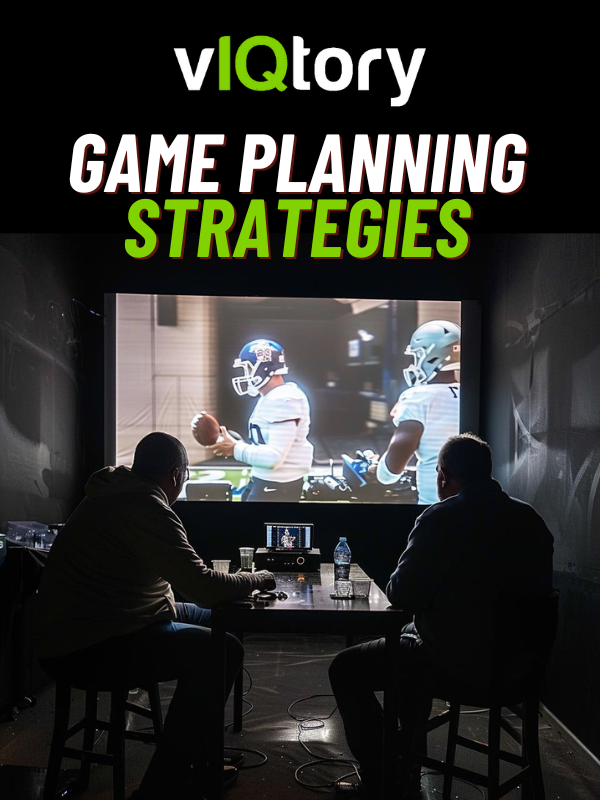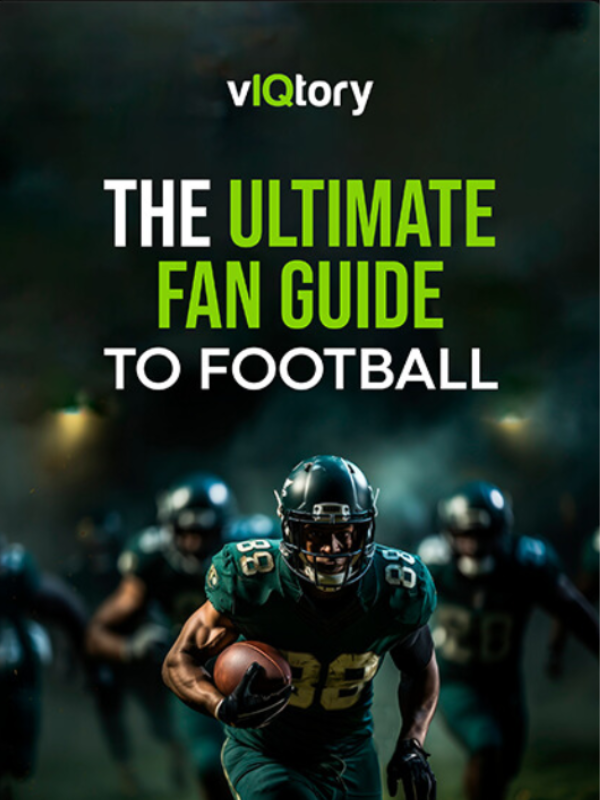Football has seen its innovations over the years. However, one innovation is currently happening in football that may change the game forever. That innovation is the RPO.
RPO stands for Run Pass Option. This play is run on offense and involves the offensive lineman blocking for a run while the receivers run routes. The quarterback can hand the football to the running back or throw it to the wide receivers.
The RPO is seen at all football levels and can harm a defense if it’s not covered correctly. This article will show you how to run RPOs and defend against them.
What Is The RPO In Football?
The RPO, also known as the run-pass option, was created to put the defense in conflict. The purpose of the RPO is to make the defense decide if they’re going to stop the run or cover the pass. Often, one player is singled out from the defense, which the offense will attack.
Run Pass Options were first seen in high school football. Coaches like Art Briles and Chad Morris started to read corners and linebackers, making throws off their decisions. The RPO then leaked into college football when Dana Holgorsen began to run them in West Virginia.
Football coaches will steal and innovate different concepts from each other. The simple concept of reading one player evolved into a complete system of doing the defense wrong.
How To Read The RPO
The RPO is tough to defend against. The concept of the run-pass option is to make one of the players on the defense wrong. This player is otherwise known as the conflict player.
The conflict player is a player on the defense who the offense is reading. If that player commits to the run, they will throw the pass. If the player stays in their pass zone, they will hand the football off in the run game. Regardless, the conflict player on defense will always be wrong. It’s up to the quarterback to make the right decision.
Above is the famous inside zone stick RPO concept. This concept is easiest for the quarterback to read, and it’s beneficial.
First, the offensive line is going to block the normal inside zone. This means they will double team if they have a player in their gap. If there’s no player in the gap, they will work up to the second level. This is where the offensive line needs to be cautious.
If the offensive lineman blocks more than 3 yards up the field, the referee may call an illegal man downfield penalty on the offense. This is why the offense needs to make sure they delay a 1/2 second before actually running to their second-level block.
The three receivers will run the stick concept while the offensive line blocks an inside zone. This means that the inside receiver will be running a hitch. The second receiver will run an out route, and the outside receiver will run a fade route.
The quarterback will be reading the inside linebacker on this play. If the inside linebacker commits to the run, the quarterback will throw the hitch in the voided space.
If the linebacker drops back into coverage on the inside receiver, the quarterback will hand the football off to the running back.
The quarterback will hand the football off because the linebacker will not be able to fill his gap, and it will give an advantage to the offense.
Learn How To Watch Film Properly…
Uncover your opponent’s offensive and defensive tendencies so you can easily build a game plan.
Inside You’ll Find:
- Strategies to pick apart defenses
- How to identify player weaknesses
- How to save time in your weekly breakdowns
The Best Time To Run An RPO
RPOs can be run at any time, on any down. Teams have started to get rid of their quick game and replaced it with RPOs. The great thing about running RPOs is that they require defenses to change their playing.
For example, if a team is a quarters coverage team, they will not cover the stick RPO because the conflict defender will always be wrong.
RPOs are great for keeping defenses off-balance. They can be run at any field area and thrown 5 or 10 yards down the field. This all depends on how the offensive line delays their downfield blocking.
There is a big difference between play-action, zone read, and RPOs. We broke down the differences here; that way, you’re able to identify them correctly.
How To Stop The RPO
RPOs can be very hard to stop. Not only are they frustrating to stop if they’re not controlled early in the game, but the offense will also thrive throughout the game.
To stop the RPO, the team must do two things:
- Play Man Coverage
- Trick & Bait The Quarterback
Playing Man Coverage Against The RPO
The best way to stop the RPO game is to play man coverage against it. Teams who can play sufficient man coverage but mirror every move the wide receiver does virtually eliminate the wide receiver’s routes.
The defense virtually eliminates any conflict player from the quarterback’s reads when the defense is in man coverage. The passing threat of reading a linebacker is now eliminated, as the defense has a player matching up with all of the receivers.
The defense can now strictly have their linebackers focus on the run and play fast, thus helping stop the RPO.
Trick Or Bait The Quarterback In The RPO
The other method of stopping the quarterback in the RPO is to bait them or trick them.
Teams will often how one coverage, then roll to it post or pre-snap. For instance, if the team shows a two-high-quarters look, they may roll down to a cover 1, man look after the ball has been snapped.
Pre-snap, the quarterback thinks they can throw the football to the inside receiver. However, post-snap, that receiver will be covered. If the quarterback cannot process the information fast after the ball has been snapped (or reads the wrong player), they could make a mistake.
Teams like Ohio State have been known to take advantage of QBs running the RPO and steal interceptions by tricking the quarterback.
Keep Learning
If you like learning about the RPO, we recommend you take our Ultimate Football Guide course next to further your knowledge.
Ready To Increase Your Football IQ?
Why spend hours on Google and YouTube trying to learn football yourself? We’ve created a simple guide that will make you the smartest person in the room.
Below are more articles to help you learn more about the RPO.
RPO Plays From The Spread Offense
Difference Between Play Action, RPO & Read Option
How Oklahoma Football Uses Split Backs & RPO
RPO means Run Pass Option and is a way for the offense to take advantage of the defense. Defensive players are conflicted about committing to the run or the pass.
If they choose wrong, the offensive will often choose right. RPOs give the offense flexibility to run or throw the football if there is enough leverage to the outside/inside.
Coaches have continued to innovate through RPOs and keep defenses guessing, forcing them to improvise every play.
Let’s keep learning! Our learning center is packed with techniques, schemes, and more!
If you’re looking for more in-depth breakdowns & coaching resources, visit our coaching resource page here.



